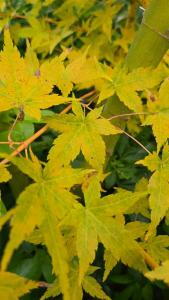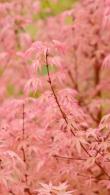Acer Palmatum Bi Ho Japanese Maple
1. Add items to basket
2. Go to the basket
3. Enter your postcode in Delivery Price Check
Plant shape: Bush
Pot size: 12 Litres
Plant ID: 13007 12
View plant size:Acer Palmatum Bi Ho
Acer Palmatum Bi Ho is a deciduous Japanese Maple tree with excellent year-round colour. It suits woodland gardens or a partly shady spot.
Japanese Maple Bi Ho means ‘beautiful mountain range’. It’s a maple native to Japan that was introduced to Europe by the French. It does well in the UK climate with some shelter. This is a maple for four seasons. In spring, new light-green foliage tinged with salmon pink appears on bare stems. The leaves are small with five palmate lobes that are very similar to the popular Sango Kaku. New foliage matures to mid-green during summer, and in autumn it lights up a garden in shades of yellow and red before falling with the frosts. In winter, Acer Palmatum Bi Ho’s stems turn a rich yellow-orange to rival the brightest dogwoods.
Height And Spread of Acer Palmatum Bi Ho
This is a small Japanese shrub or small tree that suits the most compact gardens. It grows to a maximum height of two metres.
How Hardy Is Acer Palmatum Bi Ho
Japanese Maple Bi Ho is hardy down to minus temperatures if its roots are well-drained. It can withstand sun, but the foliage may scorch in direct heat, dry soil, or exposure to harsh drying winds.
How To Use Acer Palmatum Bi Ho
This is a pretty shrub or tree for a Japanese style garden or spaces looking for year-round colour. It suits a partially shaded border, a woodland garden and low maintenance gardens.
You can grow Japanese Maple Bi Ho in a container but it must be well watered and fed regularly.
How To Care For Acer Palmatum Bi Ho
This maple can tolerate chalk but it prefers neutral to acid soil. If you have chalky conditions dig plenty of compost into the planting hole and top it up each year with a thick layer of ericaceous soil. Bi Ho prefers a partially shaded spot in the shelter of larger trees or a fence line so it’s protected from harsh winds. Water well until established and mulch the roots once a year with an appropriate compost. You do not need to prune Japanese Maple Bi Ho, but you can cut out broken or crossed stems in the winter months.













